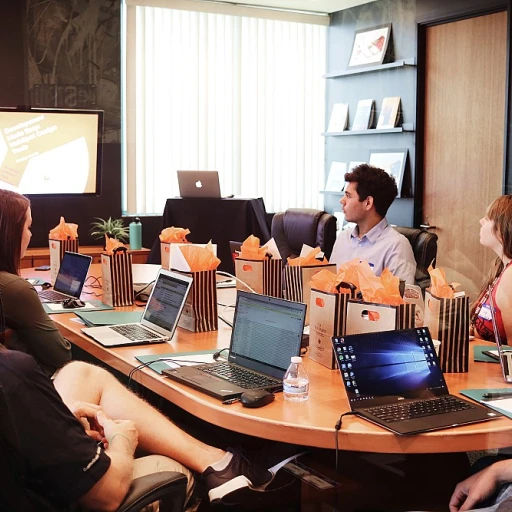Understanding the Importance of Onboarding
Why Onboarding Should Not Be Overlooked
When it comes to employee onboarding, some hiring managers tend to underestimate its significance. Getting new hires settled into their roles is more than just a 'first day on the job' thing; it's a vital process that sets the stage for their whole employee experience. A smooth and meaningful onboarding experience is key in helping new team members feel comfortable and welcome. It's like the first step in planting a seed that will grow into a flourishing member of your organization. From the first day, onboarding is about introducing new hires to the company culture. They learn the ropes, get familiar with company values, and meet their teammates. This is the time when employees start to see how they fit into the larger picture. It's their chance to reel in motivation and begin their journey towards success. Effective onboarding is essential for fostering employee engagement. When the onboarding process is handled properly, new employees are more likely to be invested in their work, leading to higher job satisfaction and productivity. According to the Society for Human Resource Management, organizations with a strong onboarding process improve new hire retention by 82% and productivity by over 70%. A good onboarding program includes training and learning opportunities, which help new hires build the skills needed for their roles. It might involve formal training sessions, shadowing experienced team members, or hands-on experience. These activities are valuable not only in boosting a new hire’s competence but also in helping them feel valued and prepared. Don’t forget, onboarding is not a one-way street. It’s a chance for new employees to share fresh ideas and perspectives, contributing to a better team dynamic. Encouraging openness from the start can bring to light innovative ideas that benefit the entire company. To create an effective onboarding program, it's essential to have a management system in place. Setting up regular check-ins is a smart practice to ensure new hires get any assistance they need and feel supported. In time, they’ll wear the 'new hire' badge only as a fond memory – confident and fully integrated team members. Crafting an engaging onboarding experience is a must for any organization aiming to build a committed and productive workforce from the beginning.Key Elements of an Engaging Onboarding Experience
Building the Foundation for Success
Creating a memorable onboarding experience isn't just about paperwork and introductions. It's the moment when a new hire starts to feel like a part of the team, and it's crucial for setting the tone for their journey in your company. The first days are pivotal, and the right approach can transform a new employee into a dedicated team member.
Welcome with Open Arms
Imagine starting a new job and feeling instantly welcomed. That's the goal. A warm welcome can make new hires feel valued and excited about their decision to join your organization. Personal touches like a welcome kit or a handwritten note from the CEO can go a long way. It's these small gestures that show new employees they're more than just a number.
Clear Communication is Key
Effective onboarding starts with clear communication. From day one, new hires should understand their role, the company's expectations, and how they fit into the bigger picture. Regular check-ins and feedback sessions can help them feel supported and ensure they're on the right track. This not only boosts employee engagement but also aligns them with company values and goals.
Training and Development
Training isn't just about learning the ropes; it's about empowering new hires to excel in their roles. An onboarding program that includes comprehensive training sessions can help new employees feel confident and capable. Whether it's through online courses, workshops, or mentoring, providing opportunities for growth is essential. This investment in training will pay off in the long run as employees become more productive and satisfied with their work.
Fostering Company Culture
Onboarding is the perfect time to introduce new hires to your company culture. Sharing stories about the company's history, mission, and values can help them understand what makes your organization unique. Encourage them to participate in onboarding activities that reflect your culture, such as team-building exercises or social events. This helps them connect with their colleagues and feel like part of the team from the start.
Creating an Onboarding Checklist
An onboarding checklist can be a valuable tool for ensuring a smooth process. It helps both the company and the new employee stay organized and on track. The checklist might include tasks like setting up equipment, completing paperwork, and scheduling meetings with key team members. A well-structured checklist ensures nothing falls through the cracks and that the onboarding process is as seamless as possible.
For more insights on crafting an effective onboarding process, especially when hiring at a large scale, check out this resource.
Leveraging Technology for a Seamless Onboarding Process
Using Tech to Make Onboarding Smooth
In today's fast-paced work environment, technology is your best friend when it comes to making the onboarding process smooth and enjoyable. The right tools can help new hires feel welcome, informed, and ready to dive into their roles without a hitch.
Imagine stepping into your new job, and everything you need is right at your fingertips. That's the power of a good onboarding management system. It can streamline the paperwork, training schedules, and even the introduction to your new team members. When technology is used effectively, it allows new employees to focus on learning and adapting to the company culture rather than getting bogged down by administrative tasks.
Virtual Reality and Interactive Learning
One of the coolest ways companies are using technology is through virtual reality (VR) and interactive learning platforms. These tools offer immersive experiences that can make training more engaging and effective. For instance, a VR tour of the office can help new hires get familiar with the workplace layout before they even set foot in the building. Interactive modules can also provide a hands-on approach to learning company values and procedures.
Automated Check-Ins and Feedback
Automated check-ins are another tech-savvy method to keep the onboarding experience on track. Regular feedback through digital platforms ensures that new employees feel supported and heard. It also gives the organization a chance to tweak the onboarding program in real-time, making it more effective for future hires. This ongoing communication helps build a sense of community and shows new team members that their input is valued.
To sum up, leveraging technology not only simplifies the onboarding process but also enhances the overall employee experience. It's about making new hires feel like they're part of the team from day one. By investing in tech-driven onboarding activities, companies can boost employee engagement and retention, ensuring that everyone feels right at home in their new job.
Building a Sense of Community from Day One
Fostering Connections from the Start
Creating a sense of belonging on day one is like giving new hires a warm welcome hug. It's that first impression that can make or break the employee experience. When new team members feel connected, they're more likely to engage and thrive in their roles. So, how do we make sure they feel like part of the family from the get-go?
Start with introductions that go beyond just names and job titles. Encourage existing team members to share a bit about themselves—perhaps a fun fact or a hobby. This not only breaks the ice but also sets the stage for genuine relationships. An effective onboarding process should include activities that promote interaction and collaboration, helping new hires feel at home.
Infusing Company Culture into the Onboarding Process
Company culture is the heartbeat of any organization. It's what makes your company unique and a great place to work. Introducing new employees to this culture early on is crucial. Share stories, values, and traditions that define your company. This not only helps new hires understand what you're all about but also aligns them with your mission and goals.
Consider organizing team-building exercises or informal gatherings where employees can mingle and learn about the company culture in a relaxed setting. These onboarding activities can be both fun and informative, allowing new hires to see the human side of your organization.
Encouraging Open Communication and Feedback
Communication is key to any successful onboarding program. From day one, encourage new hires to ask questions and share their thoughts. Regular check-ins can help address any concerns and ensure that they feel supported throughout their onboarding journey. This open dialogue fosters trust and builds a strong foundation for employee engagement.
Incorporating feedback mechanisms, like surveys or informal chats, can also provide valuable insights into the onboarding experience. This not only helps in refining the process but also shows new employees that their opinions matter.
Building a sense of community from the start is all about making new hires feel valued and connected. With the right mix of introductions, culture sharing, and open communication, your onboarding program can set the stage for a successful and fulfilling employee experience.
Measuring the Success of Your Onboarding Program
Gauging the Impact of Your Onboarding Program
Measuring the success of your onboarding program isn't just about ticking boxes on a checklist. It's about understanding how new hires feel and perform as they settle into their roles within the company. Here are some practical steps and insights to ensure your onboarding activities are making a difference:- Surveys and Feedback: Conduct anonymous surveys to get honest feedback from new employees about their onboarding experience. This will help you identify areas that need improvement. An open channel for feedback encourages transparency and boosts employee engagement.
- Performance Metrics: Monitor key performance indicators relevant to job roles, such as productivity or error rates. Compare these metrics before and after the onboarding process to gauge its effectiveness. A successful onboarding program should reflect positively on these metrics as employees become more productive over time.
- Retention Rates: One of the tell-tale signs of effective onboarding is improved retention. Track how long employees stay with the organization after completing onboarding. High turnover might indicate an experience that needs re-evaluation.
- Check-Ins: Regular check-ins with new hires are crucial. They shouldn't just be a part of onboarding but a continued effort by management to ensure employees are comfortable, well-integrated, and aligned with company values.
- Peer Evaluations: Feedback from team members who’ve worked with the new hires can provide additional perspective. This helps in understanding how well the new employee is assimilating into the team culture and if the onboarding helped set the right foundation.












